Fiber Optics Technology Optical Communication Systems Communication systems

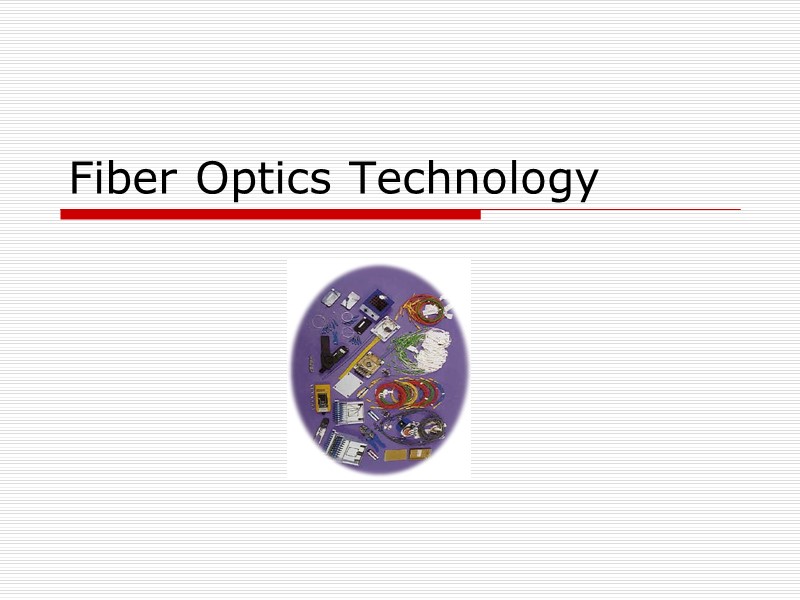
Fiber Optics Technology
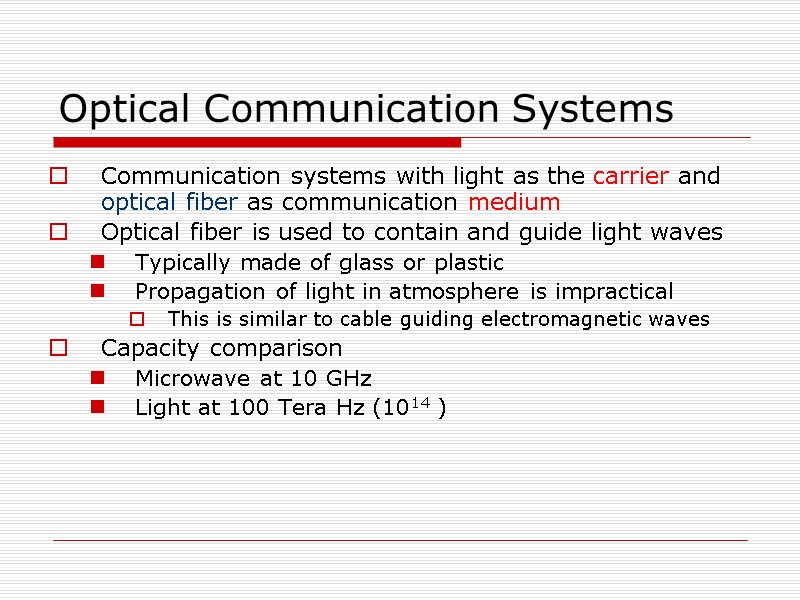
Optical Communication Systems Communication systems with light as the carrier and optical fiber as communication medium Optical fiber is used to contain and guide light waves Typically made of glass or plastic Propagation of light in atmosphere is impractical This is similar to cable guiding electromagnetic waves Capacity comparison Microwave at 10 GHz Light at 100 Tera Hz (1014 )
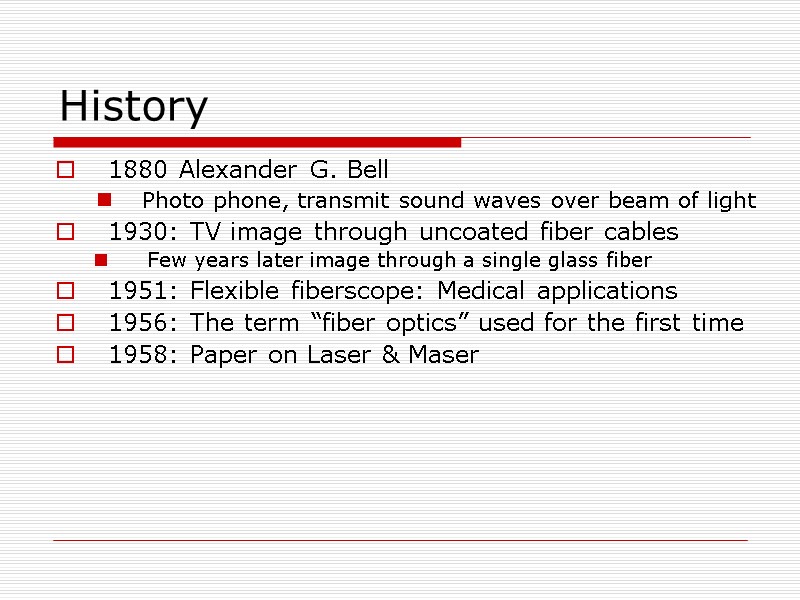
History 1880 Alexander G. Bell Photo phone, transmit sound waves over beam of light 1930: TV image through uncoated fiber cables Few years later image through a single glass fiber 1951: Flexible fiberscope: Medical applications 1956: The term “fiber optics” used for the first time 1958: Paper on Laser & Maser
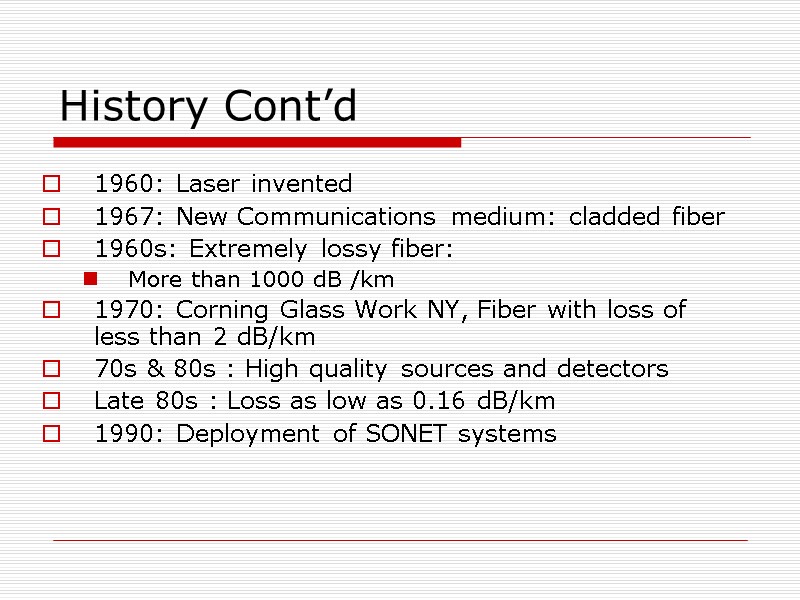
History Cont’d 1960: Laser invented 1967: New Communications medium: cladded fiber 1960s: Extremely lossy fiber: More than 1000 dB /km 1970: Corning Glass Work NY, Fiber with loss of less than 2 dB/km 70s & 80s : High quality sources and detectors Late 80s : Loss as low as 0.16 dB/km 1990: Deployment of SONET systems
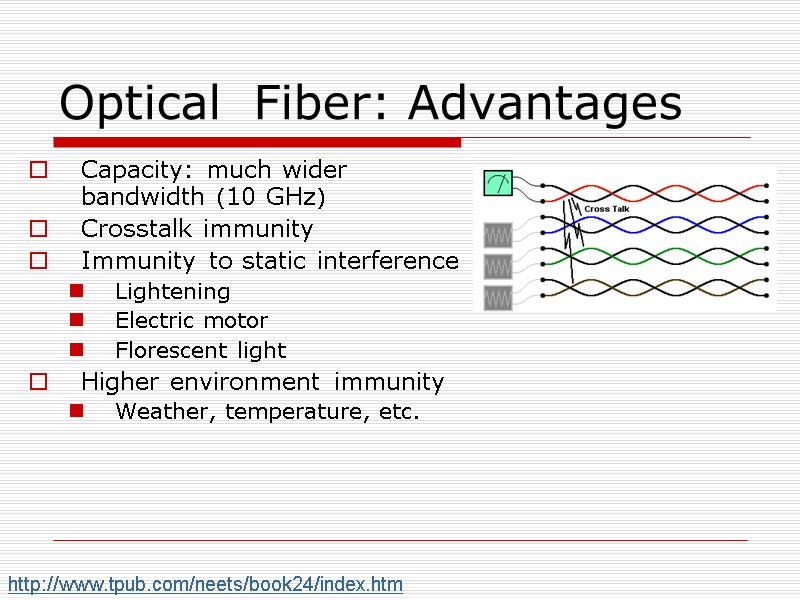
Optical Fiber: Advantages Capacity: much wider bandwidth (10 GHz) Crosstalk immunity Immunity to static interference Lightening Electric motor Florescent light Higher environment immunity Weather, temperature, etc. http://www.tpub.com/neets/book24/index.htm
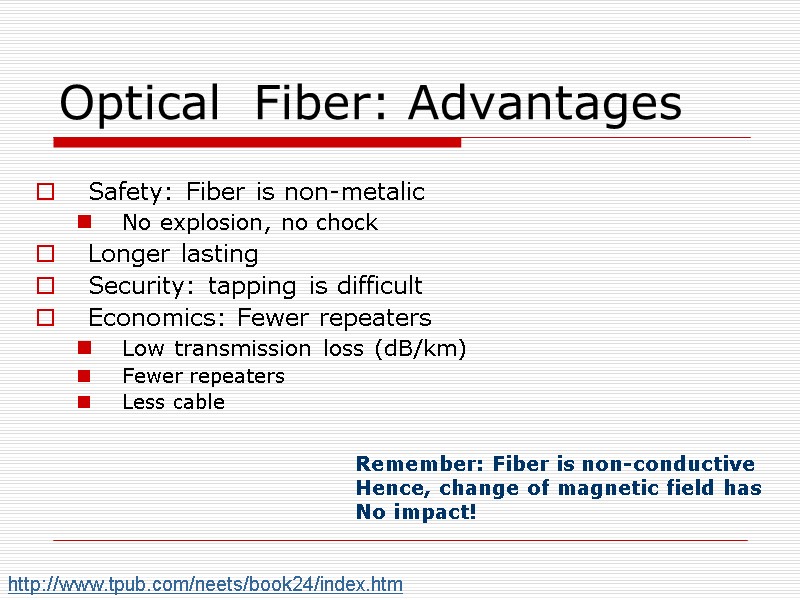
Optical Fiber: Advantages Safety: Fiber is non-metalic No explosion, no chock Longer lasting Security: tapping is difficult Economics: Fewer repeaters Low transmission loss (dB/km) Fewer repeaters Less cable http://www.tpub.com/neets/book24/index.htm Remember: Fiber is non-conductive Hence, change of magnetic field has No impact!
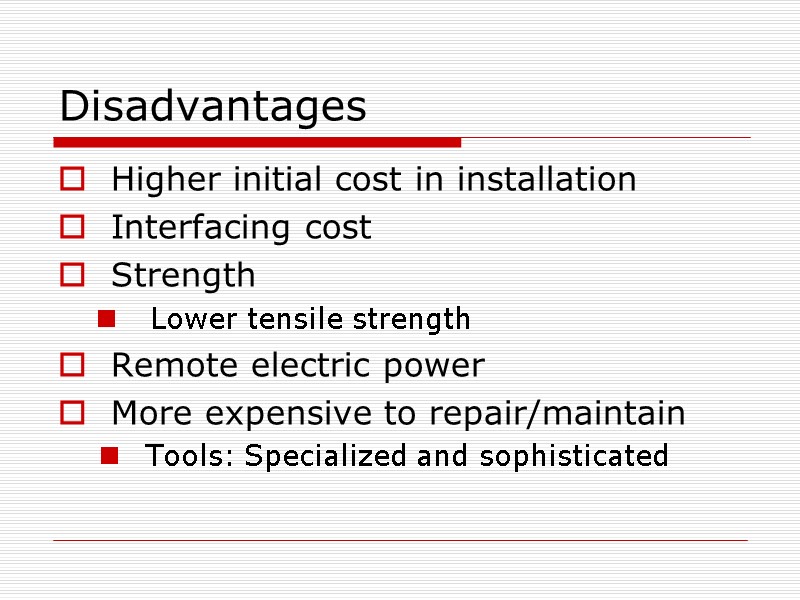
Disadvantages Higher initial cost in installation Interfacing cost Strength Lower tensile strength Remote electric power More expensive to repair/maintain Tools: Specialized and sophisticated
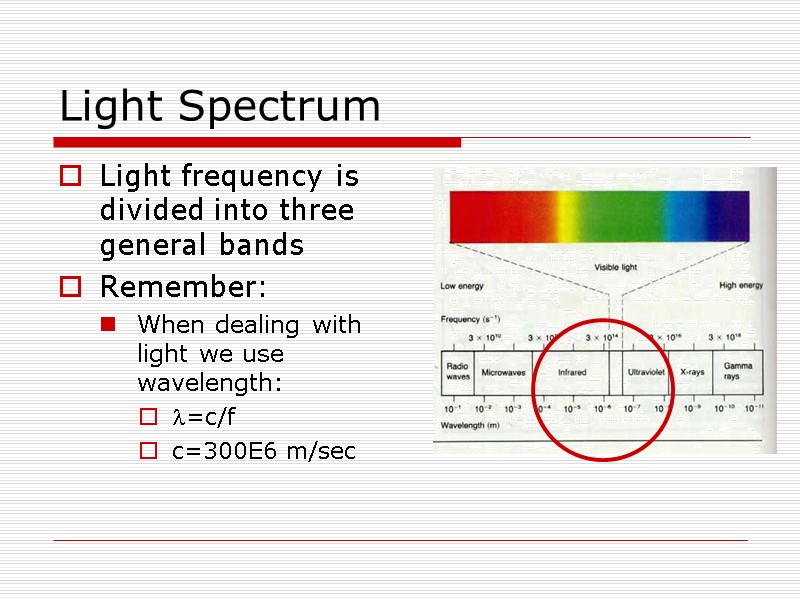
Light Spectrum Light frequency is divided into three general bands Remember: When dealing with light we use wavelength: l=c/f c=300E6 m/sec
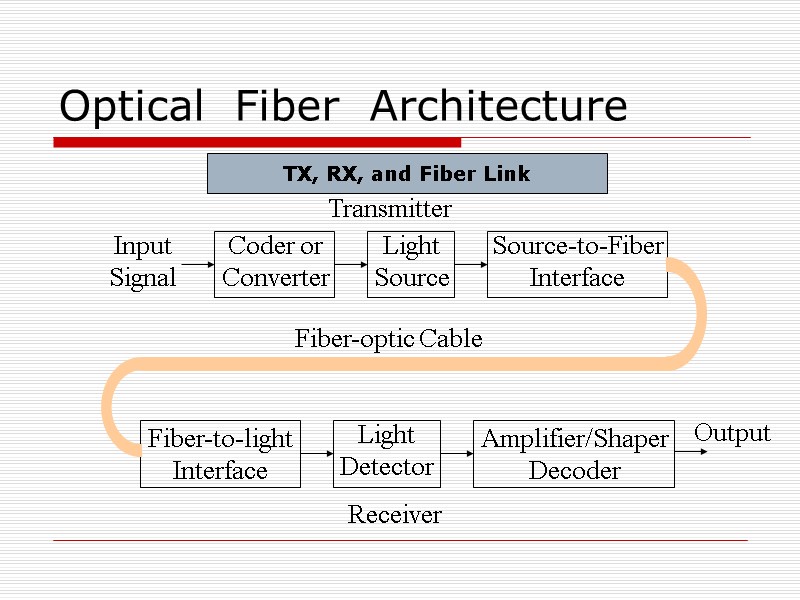
Optical Fiber Architecture Transmitter TX, RX, and Fiber Link
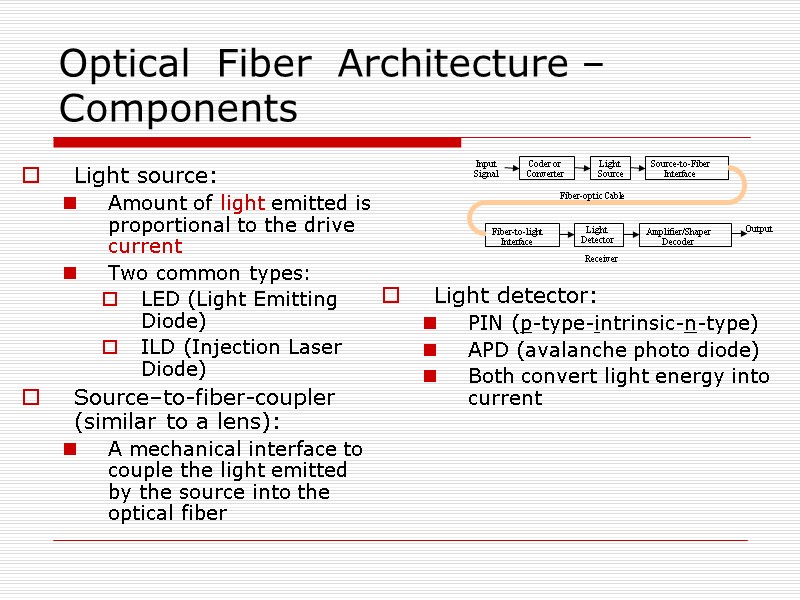
Optical Fiber Architecture – Components Light source: Amount of light emitted is proportional to the drive current Two common types: LED (Light Emitting Diode) ILD (Injection Laser Diode) Source–to-fiber-coupler (similar to a lens): A mechanical interface to couple the light emitted by the source into the optical fiber Light detector: PIN (p-type-intrinsic-n-type) APD (avalanche photo diode) Both convert light energy into current
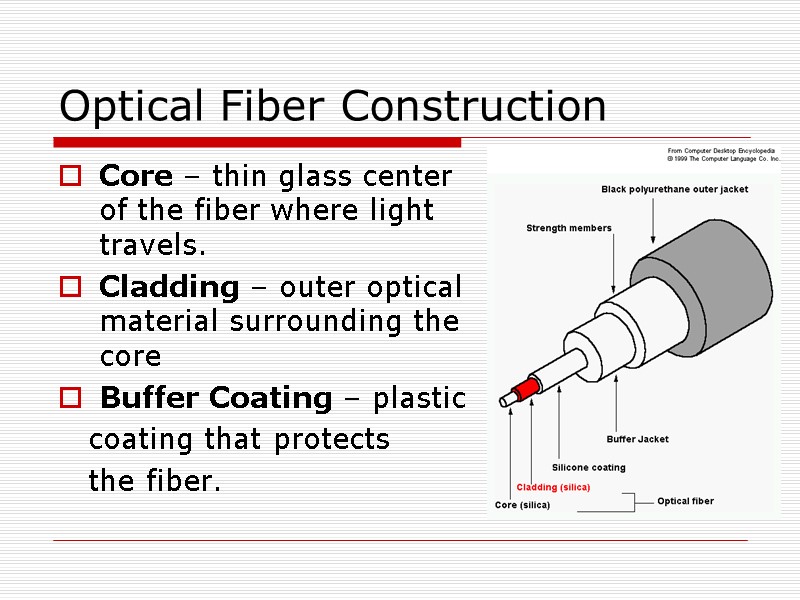
Optical Fiber Construction Core – thin glass center of the fiber where light travels. Cladding – outer optical material surrounding the core Buffer Coating – plastic coating that protects the fiber.
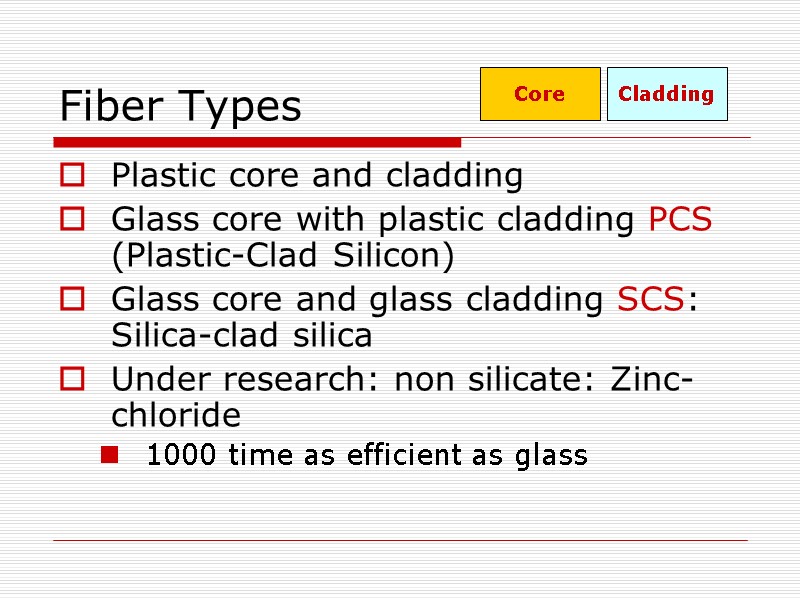
Fiber Types Plastic core and cladding Glass core with plastic cladding PCS (Plastic-Clad Silicon) Glass core and glass cladding SCS: Silica-clad silica Under research: non silicate: Zinc-chloride 1000 time as efficient as glass Core Cladding
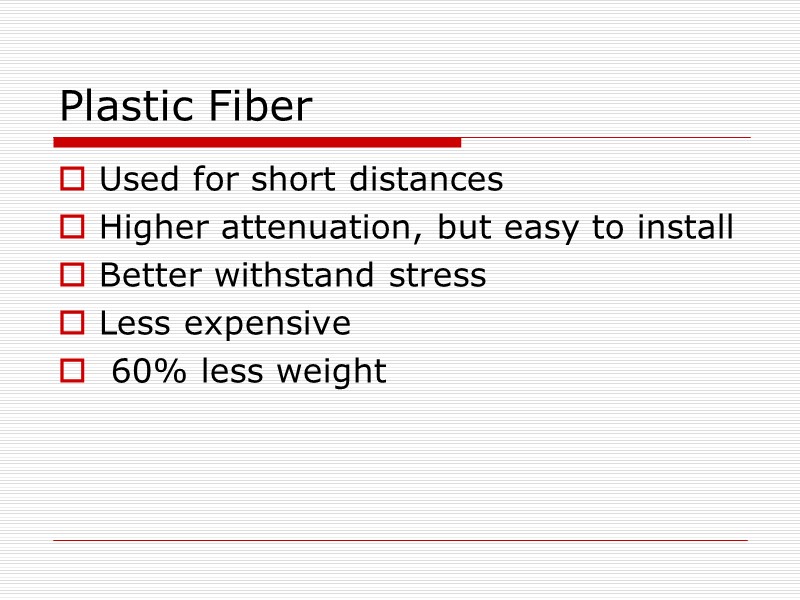
Plastic Fiber Used for short distances Higher attenuation, but easy to install Better withstand stress Less expensive 60% less weight
40338-optical_fiber.ppt
- Количество слайдов: 13

